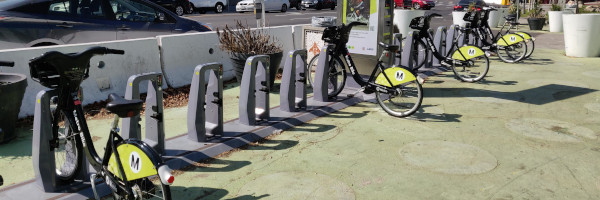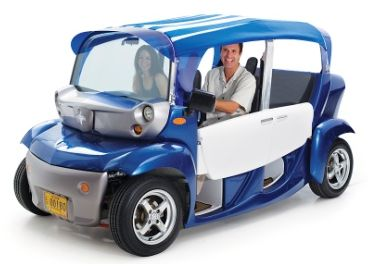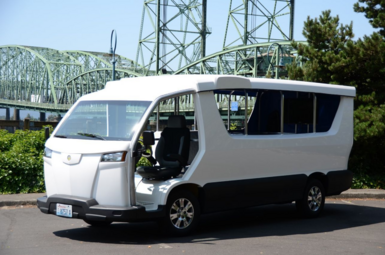Shared Mobility: Difference between revisions
No edit summary |
No edit summary |
||
| Line 4: | Line 4: | ||
|authors=Wilfred Pinfold, Skip Newberry, Jeff Allen, Ken Montler, Timothy Smith, Joe Cortright, Greta Knappenberger, Jill Sorensen, John Feo, Corey Marshall, Jose Gonzalez, Geoffrey Urbach | |authors=Wilfred Pinfold, Skip Newberry, Jeff Allen, Ken Montler, Timothy Smith, Joe Cortright, Greta Knappenberger, Jill Sorensen, John Feo, Corey Marshall, Jose Gonzalez, Geoffrey Urbach | ||
|blueprint=Transportation | |blueprint=Transportation | ||
|chapter=5001 | |||
|sectors=Transportation | |||
|summary=We can and do share a wide range of vehicles. Most of these rideshare options use conventional high speed gasoline vehicles. The use of traditional | |summary=We can and do share a wide range of vehicles. Most of these rideshare options use conventional high speed gasoline vehicles. The use of traditional | ||
gasoline vehicles is driven by the expectation that the rides will use highways. For a last mile solution this capability is not necessary. | gasoline vehicles is driven by the expectation that the rides will use highways. For a last mile solution this capability is not necessary. | ||
|email=wilfred.pinfold@opencommons.org | |email=wilfred.pinfold@opencommons.org | ||
|document=TransportationBlueprintFeb18.pdf | |document=TransportationBlueprintFeb18.pdf | ||
}} | }} | ||
[[File:ResortCar.png|left]] | [[File:ResortCar.png|left]] | ||
Urban Speed Vehicles (USVs) are a federally-approved, street-legal vehicle classification under the [https://www.nhtsa.gov/DOT/NHTSA/Vehicle%20Safety/Test%20Procedures/Associated%20Files/TP-500-02.pdf Federal Motor Vehicle Safety Standard (FMVSS 500)] passed in 1998. Their popularity has grown in niche markets with improvements in battery technology and a broader | |||
Speed Vehicles (USVs) are a federally-approved, street-legal vehicle classification under the [https://www.nhtsa.gov/DOT/NHTSA/Vehicle%20Safety/Test%20Procedures/Associated%20Files/TP-500-02.pdf Federal Motor Vehicle Safety Standard (FMVSS 500)] passed in 1998. Their popularity has grown in niche markets with improvements in battery technology and a broader | |||
acceptance of electric vehicles. | acceptance of electric vehicles. | ||
[[File:ElectricBus.png|385px|left]]City leaders and transportation planners are now incorporating USVs as a critical part of the mass transit solution. | [[File:ElectricBus.png|385px|left]]City leaders and transportation planners are now incorporating USVs as a critical part of the mass transit solution. | ||
Revision as of 17:55, July 15, 2022
| Transportation | ||||||
|---|---|---|---|---|---|---|

| ||||||
| Sectors | Transportation | |||||
| Contact | Wilfred Pinfold | |||||
| Topics |
| |||||
Activities
| ||||||
- Authors
We can and do share a wide range of vehicles. Most of these rideshare options use conventional high speed gasoline vehicles. The use of traditional gasoline vehicles is driven by the expectation that the rides will use highways. For a last mile solution this capability is not necessary.

Urban Speed Vehicles (USVs) are a federally-approved, street-legal vehicle classification under the Federal Motor Vehicle Safety Standard (FMVSS 500) passed in 1998. Their popularity has grown in niche markets with improvements in battery technology and a broader acceptance of electric vehicles.

City leaders and transportation planners are now incorporating USVs as a critical part of the mass transit solution.
Electric USVs are also the ideal starting point for autonomous vehicles because of their capital and operational cost, safety, and versatility.USVs offer an environmentally friendly approach to first and last mile challenges, expanding the distance most people will travel without a car from ¼ miles to 2 miles. Adding autonomy makes them economical as a door to transit option in all neighborhoods. One major advantage of the FMVSS 500 law is that it does not require the extensive crash testing mandated for high speed vehicles. The lower speed allows the vehicles to use lighter weight construction, modular assembly techniques, and fewer parts. The lower barrier to entrance created by FMVSS 500 law provides companies the ability for greater customization, faster innovation, and shorter time to market. The result is an affordable, practical and sustainable “link” in the transportation system that blends with walking, biking, and mass transit. Further the modularity makes local maintenance and repair possible. As reliable automation becomes available these vehicles will be able to charge themselves and arrive at a customer's door ready for a trip to a transit stop or local business.
Urban Speed Vehicles are not subject to the same crash test and safety regulations making is possible to offer a variety of cab modules on a simple chassis platform. The modular design makes it possible to purpose design and build vehicles to meet fleet requirements. Utilizing standard high quality drive components, including lithium iron phosphate batteries and high end drive train components allows Mobility Cubed to build an affordable, reliable and sustainable electric vehicle. A low parts count combined with design modularity means the vehicle can be “kitted” for local assembly and shipped cost effectively all over the world.












